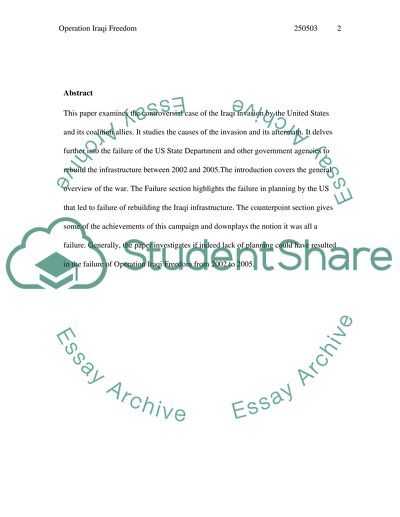Cite this document
(Operation Iraqi Freedom Term Paper Example | Topics and Well Written Essays - 1500 words, n.d.)
Operation Iraqi Freedom Term Paper Example | Topics and Well Written Essays - 1500 words. Retrieved from https://studentshare.org/politics/1517143-operation-iraqi-freedom
Operation Iraqi Freedom Term Paper Example | Topics and Well Written Essays - 1500 words. Retrieved from https://studentshare.org/politics/1517143-operation-iraqi-freedom
(Operation Iraqi Freedom Term Paper Example | Topics and Well Written Essays - 1500 Words)
Operation Iraqi Freedom Term Paper Example | Topics and Well Written Essays - 1500 Words. https://studentshare.org/politics/1517143-operation-iraqi-freedom.
Operation Iraqi Freedom Term Paper Example | Topics and Well Written Essays - 1500 Words. https://studentshare.org/politics/1517143-operation-iraqi-freedom.
“Operation Iraqi Freedom Term Paper Example | Topics and Well Written Essays - 1500 Words”, n.d. https://studentshare.org/politics/1517143-operation-iraqi-freedom.


